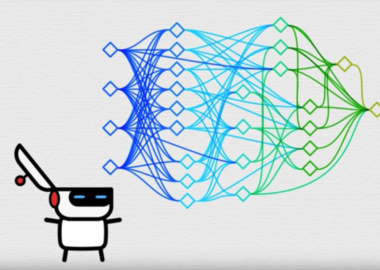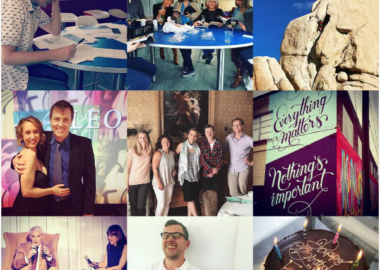This blog post isn’t about making a viral video. Instead, it’s about we learned about creating and promoting the kind of video content that connects with viewers on an emotional level.
Emotional resonance, or emotional power, may not matter to–or be appropriate for–all brands. But for many (think: Apple, Always #LikeAGirl, Westjet, UnderArmour, Ford Denmark), it’s what customers most value, and will always remember.
“I’ve learned that people will forget what you said, people will forget what you did, but people will never forget how you made them feel.” Hear, hear, Maya Angelou.
Here are some of the lessons we learned as an agency from making and promoting two of our own emotional brand videos: #TellThemNow and #WhatWillYouSay.
(Please do note that my role was to help promote these brand videos online. I can take no credit whatsoever for the artistry it took to conceive of, organize, shoot, edit and lovingly perfect them.)
#TellThemNow
At ECHO, we specialize in telling stories for and about our clients.
But with a boutique office brimming with talented creative types, including Pete McCormack, an Oscar-shortlisted filmmaker (how handy!), we do occasionally get itchy to explore our own story ideas, too.
Last year, a little before Mother’s Day, our founder, Samantha Reynolds, had an idea: what would be said if you were to stand face to face with your mother and express what you were most proud of, or grateful for? What would moms say about their children?
When Sam told me the idea, my eyes filled instantly. I not only wanted to know what would be said, but I could picture myself in that situation. I wasn’t the only one. Jane Hope, one of our senior editors, got it instantly. “We can call it #TellThemNow,” she said. A hashtag was born.
Takeaway: Ensure that your team ‘gets’ the concept and emotional punch in 30 seconds or less.
It was a go. We’d create and launch the video and an associated campaign around Mother’s Day.
Except that by the time we were actually ready to go, after gathering participants and coordinating the schedules of very busy people as well as booking studio space and time, Mother’s Day was mere weeks away.
And so #TellThemNow became about dads, and their kids.
Takeaway: Accept the fact that your video will likely take longer to plan and produce than you can imagine – especially if you’ve got other projects on the go. Give yourself at least six months for planning, production, promotion, and basking in the glow.
And a good thing, too. Father’s Day, as holidays go, isn’t as popular with marketers as Mother’s Day. The bloggers and media outlets we approached to promote #TellThemNow were thrilled to have this Father’s Day content to promote and comment on, and many took it on as their own.
Takeaway: Blogging has grown up – just because someone isn’t with a major traditional media brand, doesn’t mean that they’re not big league. Act accordingly.
It helped hugely, too, that we followed the advice we received about seeding the video first with some paid promotion – especially on Facebook and YouTube. By investing about $2,500 on YouTube and Facebook to promote the video, targeting an audience in major Canadian and US cities, we ensured that the video had a healthy number of views before our key influencers viewed it. They loved it, yes, and may have shared it anyway – but it’s just that bit more compelling to share a video that’s been seen 25,000 times than something viewed only 25 times.
Takeaway: Figure out what you can afford to invest in seeding your video to target audiences. Developing an initial audience is important to convince viewers in general as well as key influencers to share it.
Thanks in part to the passion of the influencers we approached, and to the relative dearth of Father’s Day-specific content out there, #TellThemNow did go viral – at least by Canadian standards.
Thousands of people commented on it and shared it. Bloggers picked it up. Local and national TV stations called, did stories, and aired it. Guy Kawasaki Facebooked it. Maria Shriver tweeted it. Danielle LaPorte included it in her newsletter and blasted it out across her social platforms. Thanks, and bless ’em all.
Takeaway: Don’t be afraid to ask influential friends to share good stuff – as long as you’re ready to provide them with all the tools they need to do it: ready-made copy, valid links, strong images in the right social formats, even raw video files.
We were dumbstruck. And a wee bit giddy.
The video amassed more than 500,000 views on YouTube plus a few hundred thousand more when posted natively on news channels and Facebook. We received thousands of comments on the video, and received feedback by email and – yes – phone and letter, too.
All great things. The real joy, however, came in hearing the specific stories. There was the man who hadn’t talked to his father in ten years but picked up the phone to call his dad after viewing the video. The news anchor who had to wipe tears away on air. The 16-year-old who had lost her dad to cancer, who told us she regretted never asking what made him proud.
#WhatWillYouSay
After the groundswell of attention and interest provoked by #TellThemNow, we were keen to try again. After a good long break, that is.
And we already had a video idea in mind – we’d had one for nearly a year, in fact, after missing our Mother’s Day deadline the first time around. We weren’t going to make that mistake again.
The problem, however, is that the months between January and May are short and peculiarly busy ones for many agencies.
And while we knew we wanted to say something about the loving, but often complicated relationships between mothers and their daughters, we weren’t quite sure what it was – until it was nearly too late.
It turns out that following up a hit single is, indeed, as tricky a task as it seems. We didn’t want to replicate #TellThemNow in terms of content, but longed to capture some of the same heartfelt, spontaneous expression that arose between parents and their children. We wanted humour, too, and were feeling brave, so introduced more young kids into the mix. And recognizing that there is an enormous well of feeling just beneath the surface for nearly everyone when it comes to moms as well as dads, we ultimately asked each of our participants to tell us something they would like to say to their mothers, but haven’t been able to.
The resulting video was poignant and raw with emotion. Three of our participants had lost their mothers. Many had highly challenging relationships. Some had parents who had struggled with addiction, leaving clear scars on relationships. Some had battled illness together.
Nearly everybody who watched the video responded positively and/or emotionally to #WhatWillYouSay. Viewership soared across combined channels, reaching about the same as #TellThemNow, thanks in part to our trusted influencers and giving network, not to mention the kind folks at Yahoo! Canada and VancouverIsAwesome, who shared the video on their own channels. Thousands of people commented and shared stories of their own relationships with their mothers. All in all, #WhatWillYouSay received more than 600,000 views.
We had, once again, scored a hit.
One thing puzzled us, though. The video wasn’t quite as viral. Fewer people shared #WhatWillYouSay, compared to #TellThemNow. Why, we wondered?
There was no question about production quality or resonance. We did many of the same things that we did for #TellThemNow. We invested some seed money; we approached influencers; we even went further and created an Instagram campaign to promote it alongside Twitter and Facebook.
The big differences, we think, came down to marketing and PR.
Mother’s Day, as a holiday (or event) is a crowded playing field. Blogs, magazines, and TV stations already had content lined up.We simply left our PR plan too late. Mother’s Day publicity cost more, too. Much more. Mommy bloggers – unlike the dad bloggers we’d spoken to the year before – are professional media outlets and quoted professional rates for sharing content.
Takeaway: If you’re vying for traffic or attention on a holiday like Mother’s Day, plan far in advance. Get a PR plan in place at least four months before launch.
We also chose to focus this campaign on Facebook, hosting the video natively there and focusing most of our budget there, believing that people would be far more likely to comment and share on a platform like Facebook than YouTube (where we’d parked #TellThemNow). Makes sense, right?
And people did view on Facebook – many more than #TellThemNow. But about halfway through the campaign, we also discovered that most of our “views” on Facebook were seen silently.
Which is why those ‘viewers’ weren’t sharing. The video was simply playing when people opened their Facebook feed. We discovered that only a third of viewers made it past 14 seconds on Facebook. They probably didn’t watch it.
Takeaway: Host natively on Facebook to build up reach and video views. But know that those numbers don’t tell the whole story. Nearly half of those users aren’t really watching it. If you want shares, you’ll need to increase your investment on Facebook.
If we were to do it all again, we’d trust the Facebook numbers less, in terms of people really consuming and investing in the content, and we’d invest more $$. The secret, we suspect, is to simply invest as much as you can to increase reach, and hope that half of those folks see and love your content – and that a smaller but still large number will share it. The bottom line, we suspect, is that if Facebook is right for the demographic you’re targeting (as it was for us) you must create the video with Facebook in mind: make it short, snappy, and compelling even when/if on ‘silent’ mode.
We’d also go back to investing more in YouTube. For us, it was a far more engaged audience than Facebook; about half of our organic users on YouTube watched the video until the end, and a quarter of our paid viewers watched to the end. It simply cost more this year to seed viewership there – and we should have upped our budget.
Takeaway: It’s more expensive in 2016 than it was in 2015 to seed viewership. Set aside an even bigger chunk in 2017.
Our biggest lesson?
In terms of promotion, complexity is complex. Whereas viewers instantly ‘got’ the emotional impact that #TellThemNow would have by simply seeing the image of a dad and a son standing nervously face to face against a white background, it was tougher to capture–in an image or a sound byte–the multi-layered series of stories that #WhatWillYouSay told. These stories were incredible. But harder to explain. You–well, you had to watch the video to understand.
Takeaway: Do user testing ahead of time on the hashtags, headlines, and visuals you’re considering for your campaign. Instant ‘getability’ and psychological impact matters more than you think.
The Big Picture: What We Learned From Two Video Campaigns
Creating and promoting these videos was a labour of love for all of us at ECHO. The process was thrilling, time-consuming, emotionally exhausting, nerve-racking, and insanely gratifying. The lessons learned were hard-won and unforgettable.
We now have no illusion that things will be easier the next time.
And we can’t wait.





